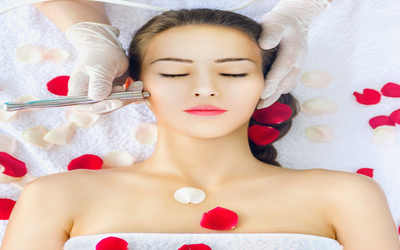Considering Dermabrasion? Watch Out for These Side Effects
If you keep your ear to the ground with anti-ageing wellness, you’ve probably heard of dermabrasion. This skin-resurfacing procedure essentially sands away the outer layer of you skin, using a rapidly rotating device. Sounds robust, but after this process your skin grows back is usually smoother and younger looking, although the treatment may make your skin sensitive and bright pink for several weeks. Dermabrasion can also improve the look of scars, such as those caused by your acne, but as the pinkness will likely take about three months to fade, you may just be replacing one embarrassing skin complaint with another, albeit temporarily.
Still, there’s a wealth of benefits to dermabrasion, as the process can eliminate your fine wrinkles (especially those around the mouth) as well as reducing the sun damage of your skin, such as your age spots. If you want to get rid of a tattoo or potentially precancerous skin patches (actinic keratoses), dermabrasion can be used for this too, and the process can also help to even out your skin tone, and diminish any swelling and redness in your nose that’s been caused by rhinophyma. However, before you sign up for your appointment, dermabrasion can cause various side effects which you need to consider:
1. Redness and swelling: Any part of your skin that has been treated will be red and swollen, which usually begins to decrease within a week. However, this might last for weeks or even months.
2. Bleeding: It’s perfectly normal for skin to bleed a little after dermabrasion, but if you maintain proper skin care, the bleeding should stop on its own.
3. Acne: Although it’s not like the acne scars you’ve just got rid of, you might notice tiny white bumps or milia on your treated skin. The good news is that you can get rid of the milia with soap or an abrasive pad, that is, if they don’t go away on their own.
4. Bigger pores: Unfortunately, the process may enlarge your pores, but this side effect typically doesn’t affect your wellbeing for long, as it mostly goes away after any swelling decreases.
5. Changes in your skin colour: In the treated area, your skin can commonly become blotchy, darker than normal (which is known as hyperpigmentation) or lighter than normal (hypopigmentation). You’re more likely to suffer with this problem if you have darker skin, and, be warned, this can sometimes be permanent.
6. Infection: This is a rare wellness threat but it does happen, as dermabrasion can lead to a bacterial, fungal or viral infection. This may include a herpes flare-up, as this virus causes cold sores.
7. Scarring: Again, this one is rare as it only occurs if the dermabrasion has been done too deeply. You can often use steroid medications to soften the appearance of these scars.
8. Other skin reactions: If you love your freckles, you may want to steer clear of dermabrasion as these little beauty spots may disappear from the treated areas. Moreover, your skin may flare up if you often develop allergic skin rashes or other skin reactions, so the treatment may not be for you if you have sensitive skin.
If you’re still up for this exfoliating treatment in spite of these warnings, bear in mind that dermabrasion isn’t for everyone, and you need to consult your GP before making your final decision. This is vital, as your doctor might caution against dermabrasion if you have burn scars, skin that’s been damaged by radiation treatments, a history of ridged areas caused by an overgrowth of scar tissue (keloids) in your family, recurrences of herpes simplex infection or acne or have taken any acne medication containing isotretinoin in the past year.


Comments are closed.